The Role of Automation in Modern Sales Proposals
Streamline your sales process, reduce sales cycle time, and close deals faster. Learn how to do it with proposal automation.
— Propoze
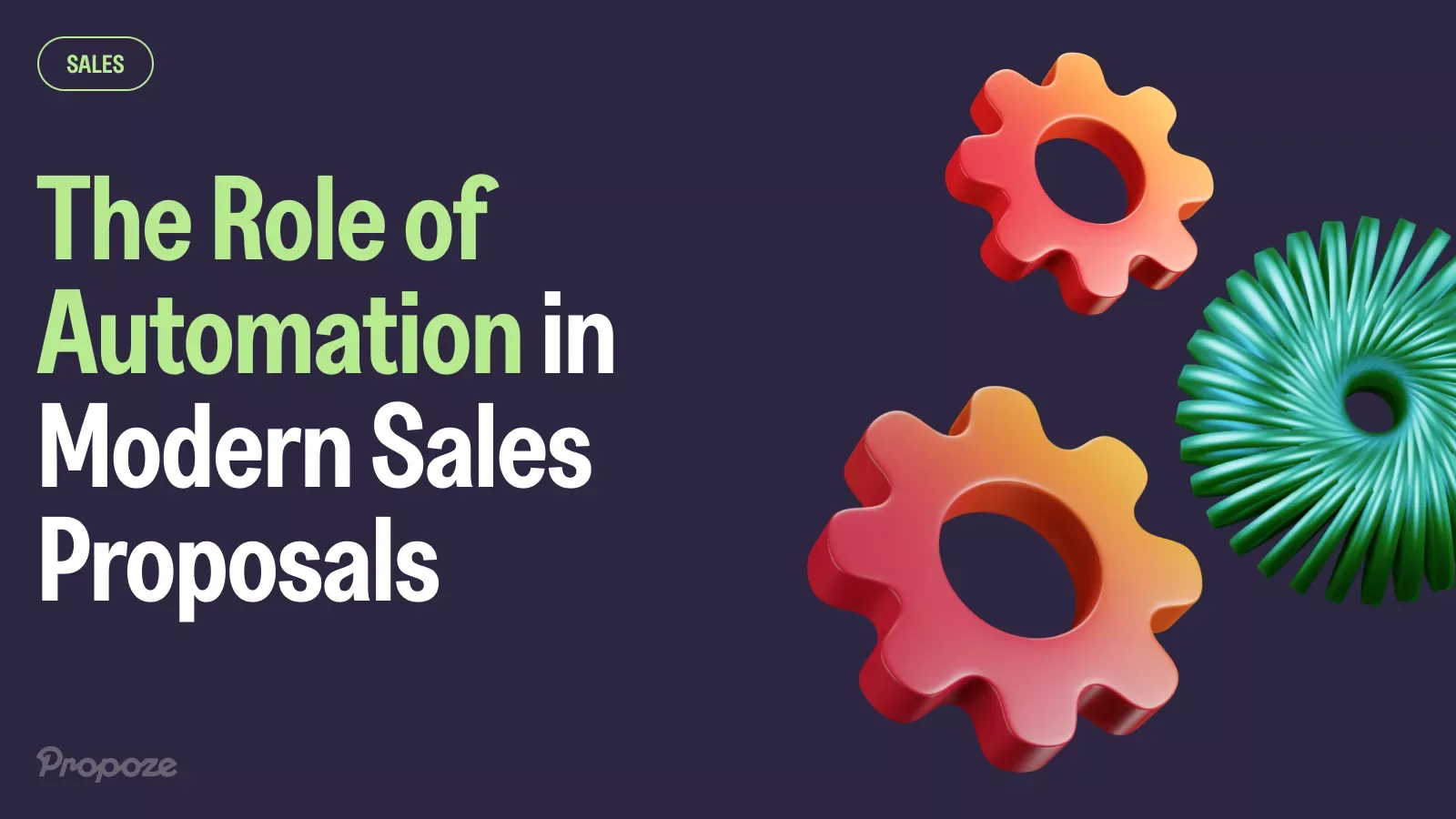
Automation is a game-changer for small agencies, freelancers, and creative professionals. It saves time, cuts down on errors, and helps you create consistent, high-quality proposals by enabling you to automate repetitive tasks such as data entry, formatting, and drafting.
Whether you’re juggling multiple clients or working solo, automation can make your life easier.
In this post, we’ll show you how automating your sales proposals can help you work smarter, close more deals, and stay ahead of the competition.
Key benefits of automating sales proposals
Automating sales proposals is more than just a time-saver; it’s a strategic advantage for small businesses, freelancers, and creative professionals. Here’s a deeper look into the key benefits:
1) Save time and increase productivity
Automating repetitive tasks speeds up the proposal creation process by handling routine tasks. This gives you more time to focus on client relationships and strategy, rather than repetitive work. When your workflow is more efficient, you can take on more clients and projects without feeling overwhelmed.
2) Ensure consistency and professionalism
Automating repetitive tasks speeds up the proposal creation process by handling routine tasks. This gives you more time to focus on client relationships and strategy, rather than repetitive work. When your workflow is more efficient, you can take on more clients and projects without feeling overwhelmed.
3) Reduce errors and improve quality
Human error is natural, especially under tight deadlines. Automation minimizes these mistakes by standardizing processes. This means fewer revisions and more accurate proposals, which reflect well on your business.
4) Scale your operations as you grow
As your business expands, so does the need for more proposals. Automation allows you to scale up without adding extra work.
Whether you’re dealing with a few clients or dozens, automated tools help you manage the increased volume while keeping each proposal detailed and personalized.
An automation tool can further enhance efficiency by streamlining the proposal creation process, offering customization, integration with existing systems, and improving proposal quality through automated content management and real-time updates.
5) Personalize proposal creation process easily
Automation doesn’t mean losing the personal touch. In fact, it makes it easier to tailor proposals to each client’s needs. With the ability to pull in specific client data, your proposals can address unique challenges and goals, making them more relevant and engaging. A centralized content library can help in pulling specific client data to personalize proposals.
6) Gain insights with analytics
Sales proposal automation tools often come with analytics that track how clients interact with your proposals. You can see which sections capture their attention, how much time they spend on each part, and even if they share the proposal with others.
These insights help you refine your proposals and improve your chances of closing deals.
Additionally, analyzing performance metrics and client engagement from current proposals can inform adjustments and enhance the quality and efficiency of future proposals.
7) Speed up turnaround and close more deals
In sales, speed matters. Automated proposals can be generated and delivered quickly, helping you respond faster than your competition. By leveraging these tools, you can create personalized proposals swiftly, ensuring that each one is tailored to the client's specific needs. A quicker response time often leads to faster decisions from clients, increasing your chances of closing the deal.
This approach of automating your proposal leads to higher efficiency, improved proposal quality, and, ultimately — better sales outcomes.
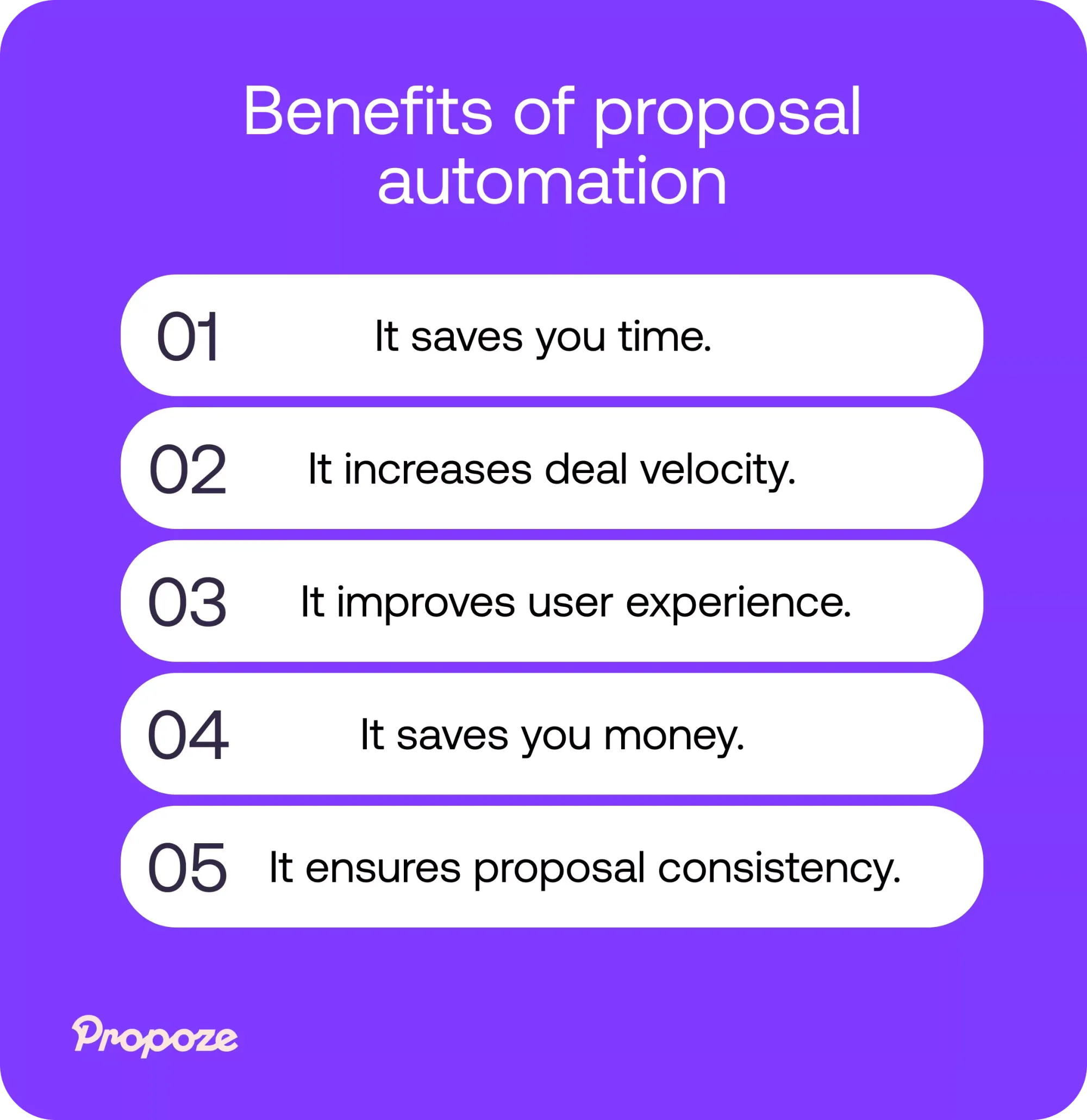
Speed up your proposals with automation tools
Proposal automation tools revolutionize how you create proposals by simplifying and speeding up the entire process.
Here’s how they help:
- Templates: These tools come with customizable templates that ensure every proposal aligns with your brand’s standards. You don’t need to start from scratch each time, which saves valuable time.
- Customization: Automation allows you to quickly insert client-specific details, making each proposal feel personalized and relevant. This personalization increases client engagement and interest.
- Error reduction: By automating data entry and formatting, these tools minimize the risk of mistakes. This ensures that every proposal is accurate and professional.
- Consistency: With automated processes, you maintain a consistent level of quality across all your proposals. This helps build trust with your clients as they receive well-structured and polished documents every time.
- Easy collaboration: Automation tools often include features that allow multiple team members to work on a proposal simultaneously, making collaboration smoother and more efficient.
All this sounds great — but which tools should you go for? Here’s our handpicked list of best tools that will speed up your proposal creation process.
1) Propoze
Propoze is ideal for creating and managing sales proposals, especially for small businesses and freelancers. It offers customizable templates that ensure consistency and brand alignment. You can easily drag and drop elements into your proposals, making customization quick and straightforward.
Who is it for?
Small businesses and freelancers looking for an easy-to-use proposal management tool.
Key features
Customizable templates, drag-and-drop elements, real-time client interaction tracking, and brand alignment.
Pricing
Propoze offers two pricing options to cater to different needs:
- Free: This plan includes unlimited drafts, up to 3 published proposals at a time, access to proposal templates, PDF export options, email support, and live chat support.
- Plus: For 9 EUR per month (billed yearly at 108 EUR), this plan offers everything in the Free plan plus unlimited published proposals, brand customization, client proposal approval, media & file attachments, priority support, and more.
2) PandaDoc
Best for document automation, PandaDoc allows you to create, send, and track proposals with ease.

It integrates with CRM systems like Salesforce and HubSpot, pulling in client data automatically. This ensures that your proposals are always accurate and personalized. You can use PandaDoc’s e-signature feature to close deals faster by allowing clients to sign documents online instantly.
Who is it for?
Businesses of all sizes that need robust document automation.
Key features
CRM integration, e-signatures, document tracking, and automated data entry.
PandaDoc also offers robust proposal automation solutions that leverage technology and AI to streamline the proposal management process, enhance productivity, and improve the quality of proposals.
Pricing
PandaDoc offers three pricing tiers to suit different needs:
- Starter: Priced at $19 per user per month, ideal for quickly creating and signing forms and agreements.
- Business: At $49 per user per month, this plan includes advanced features like custom quotes, CRM integrations, and approval workflows.
- Enterprise: This plan is customizable with per-seat or per-document pricing, offering comprehensive solutions like CPQ (Configure, Price, Quote) and workflow automation.
3) Qwilr
Qwilr is great for turning your proposals into interactive web pages, which can be more engaging for clients.

It’s especially useful for creative professionals who want to present their proposals in a visually appealing format. With Qwilr, you can embed videos, pricing tables, and even Google Maps into your proposals. This tool is perfect for those who want to make a strong visual impact while keeping the proposal process streamlined.
Who is it for?
Creative professionals and agencies wanting to create visually engaging proposals.
Key features
Interactive web page proposals, video embedding, pricing tables, and Google Maps integration. Qwilr also includes advanced proposal automation tools.
Pricing
Qwilr offers two primary pricing plans tailored to different business needs:
- Business: Priced at $35 USD per user per month when billed annually (or $39 USD per user per month when billed monthly), this plan includes features like content creation, e-signatures, dynamic pricing, page analytics, and integration with HubSpot CRM.
- Enterprise: At $59 USD per user per month (billed annually), this plan includes all Business features plus additional options like Salesforce integration, custom domains, team permissions, and dedicated account management.
4) Proposify
Proposify helps you maintain consistency across all your proposals by offering a proposal management software with a centralized library of templates and content.

It’s ideal for teams who need to collaborate on proposals, as it allows multiple users to work on a document simultaneously. Proposify’s analytics feature helps you understand which sections of your proposal are most engaging to clients, enabling you to refine your strategy.
Who is it for?
Teams needing collaborative sales proposal automation tools.
Key features
Centralized template library, real-time collaboration, analytics, and CRM integration.
Pricing
Proposify offers three pricing plans to accommodate different team sizes and needs:
- Basic: At $29 per user per month (billed annually), or $35 per user per month (billed monthly), this plan includes 5 document opens per month, up to 2 users, and essential features like e-signatures and document analytics.
- Team: At $41 per user per month (billed annually), or $49 per user per month (billed quarterly), this plan includes 30 document opens per month and additional features like branded domains and custom fields.
- Business: For $65 per user per month (billed annually), this plan is ideal for larger teams, offering unlimited document opens, Salesforce integration, and advanced security features. A 10-seat minimum applies.
5) Better Proposals
Better Proposals is excellent for freelancers and small agencies that need proposal automation solutions to create professional-looking proposals quickly.

It offers a variety of templates that can be customized to fit your brand. Better Proposals also includes a “proposal AI” feature that suggests improvements to your documents based on data from successful proposals.
Who is it for?
Freelancers and small agencies needing quick, professional proposals.
Key features
Customizable templates, proposal AI for optimization, and e-signatures.
Pricing
Better Proposals offers three pricing tiers to accommodate different business needs:
- Starter: At $19 per user per month, this plan is perfect for new businesses looking to create professional proposals with essential features.
- Premium: Priced at $29 per user per month, ideal for small businesses or freelancers, offering enhanced brand customization and automation.
- Enterprise: For $49 per user per month, this plan is designed for sales teams needing advanced features like team collaboration and full pipeline visibility.
Better collaboration and team communication through automation tools
Automation boosts teamwork and communication in proposal creation.
Here’s how:
- Work together in real-time: Team members can edit the same proposal at once, with updates visible instantly. This reduces delays and keeps everyone on the same page.
- Centralized feedback: All comments and suggestions are stored in one place, making it easier to track changes and feedback without getting lost in emails.
- Version control: Automation tools manage versions, ensuring everyone is working on the latest document, reducing errors and confusion.
- Assign tasks easily: You can assign tasks to team members and track their progress, keeping the project moving smoothly.
- Integrated systems: These tools connect with CRM systems, ensuring that all client information is up-to-date and easily accessible, enhancing overall communication and coordination.
This approach helps teams collaborate more effectively, streamline their workflow, and ensure that everyone is aligned, leading to faster and more successful proposal outcomes.
How real-time updates and teamwork tools make proposal writing easier
Real-time updates and collaboration tools make working on proposals a breeze, especially when things are moving fast.
With tools like Propoze, everyone can jump in and work on the same proposal at once. Picture this: the marketing team tweaks the branding while the sales team fine-tunes the pricing, all happening at the same time.
No more endless email chains or waiting for feedback—everything happens in real-time, keeping the proposal accurate and everyone on the same page.
Imagine a small agency racing against a deadline. The writer, designer, and project manager all collaborate on the same proposal at once. The writer crafts the content, the designer adds visual flair, and the project manager makes sure everything’s just right—all without stepping on each other’s work.
Integrating proposal software with project management tools can further enhance collaboration and efficiency, ensuring seamless workflow and effective task management.
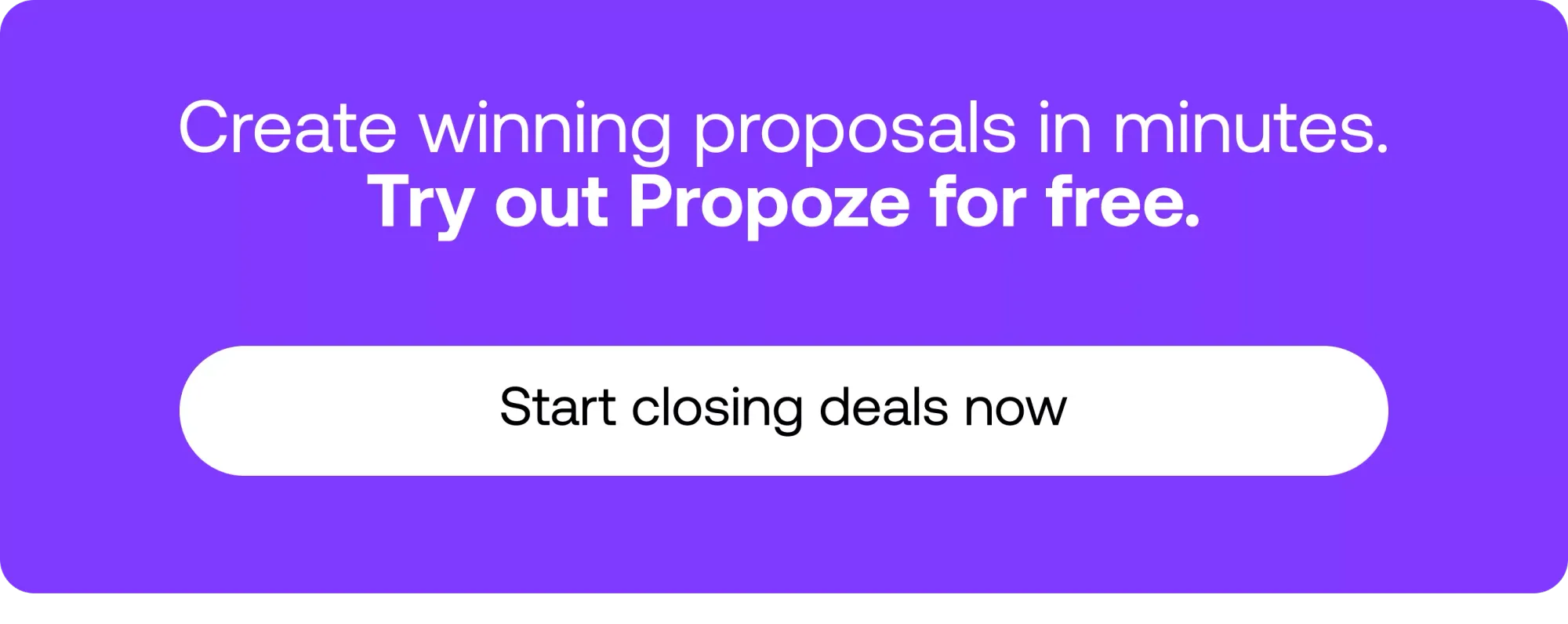
How connecting your CRM to proposal software gives you better client insights
When you connect your CRM to proposal automation software, you unlock a treasure trove of client insights. Imagine pulling in all that client data — like past interactions and preferences — right into your proposals.
Tools like PandaDoc make this super easy, letting you create proposals that really speak to what your client cares about.
For example, if a client is big on sustainability, you can highlight your eco-friendly options. Plus, with real-time tracking, you can see what parts of your proposal grab their attention the most, helping you tweak and improve as you go.
How to measure the impact of automation on your sales performance
When you’re using automation in your sales process, it’s important to know if it’s really making a difference.
Here’s how to figure that out. Using a proposal automation tool can help track and analyze key metrics effectively.
Key metrics to track and analyze your automated proposals
1) Sales cycle time
A shorter sales cycle indicates that your automation is helping to move deals along more efficiently. Tracking key metrics helps in managing proposal management tasks more efficiently, ensuring that the entire proposal lifecycle is streamlined. The faster you can close deals, the more sales you can process, leading to increased revenue and a more streamlined operation.
How to calculate sales cycle time?
Measure the total time from the first contact with a prospect to the final closing of the deal. This can be tracked by recording the start and end dates for each sales process in your CRM or proposal software.
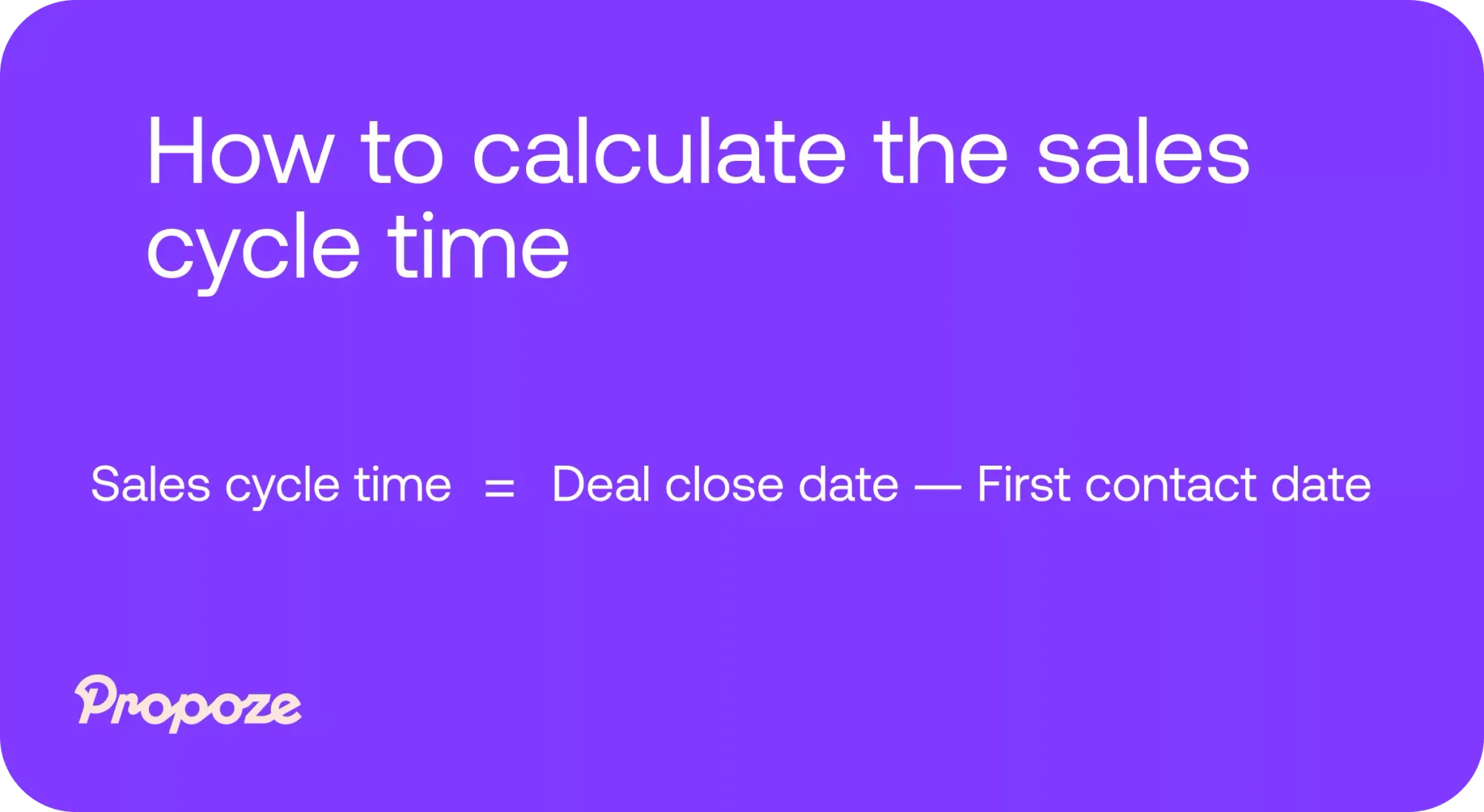
2) Conversion rates
Conversion rates are a direct measure of how effective your proposals are at sealing the deal. A higher conversion rate suggests that your automated proposals are more compelling and tailored to your client’s needs.
How to calculate conversion rates?
Divide the number of successfully closed deals by the total number of proposals sent out, then multiply by 100 to get a percentage. For example, if you sent out 50 proposals and 10 led to signed deals, your conversion rate would be 20%.
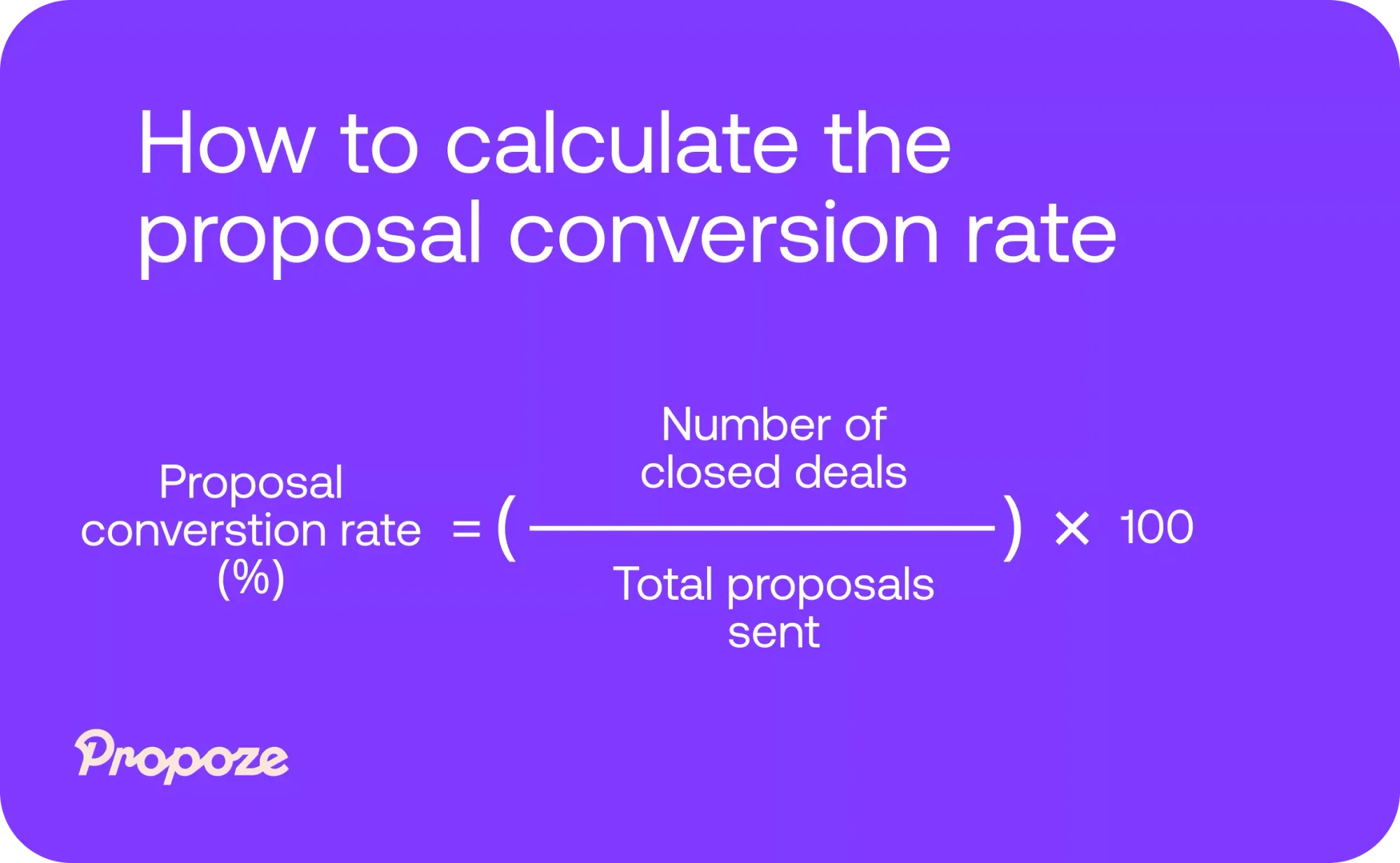
3) Time savings
Time saved directly translates to increased productivity. If automation is cutting down the hours needed to draft and finalize proposals, your team can focus on more strategic tasks, leading to better overall performance.
How to calculate time savings?
Track the average time spent on creating a proposal before and after implementing automation. You can use time-tracking software or logs within your proposal tool to monitor this.
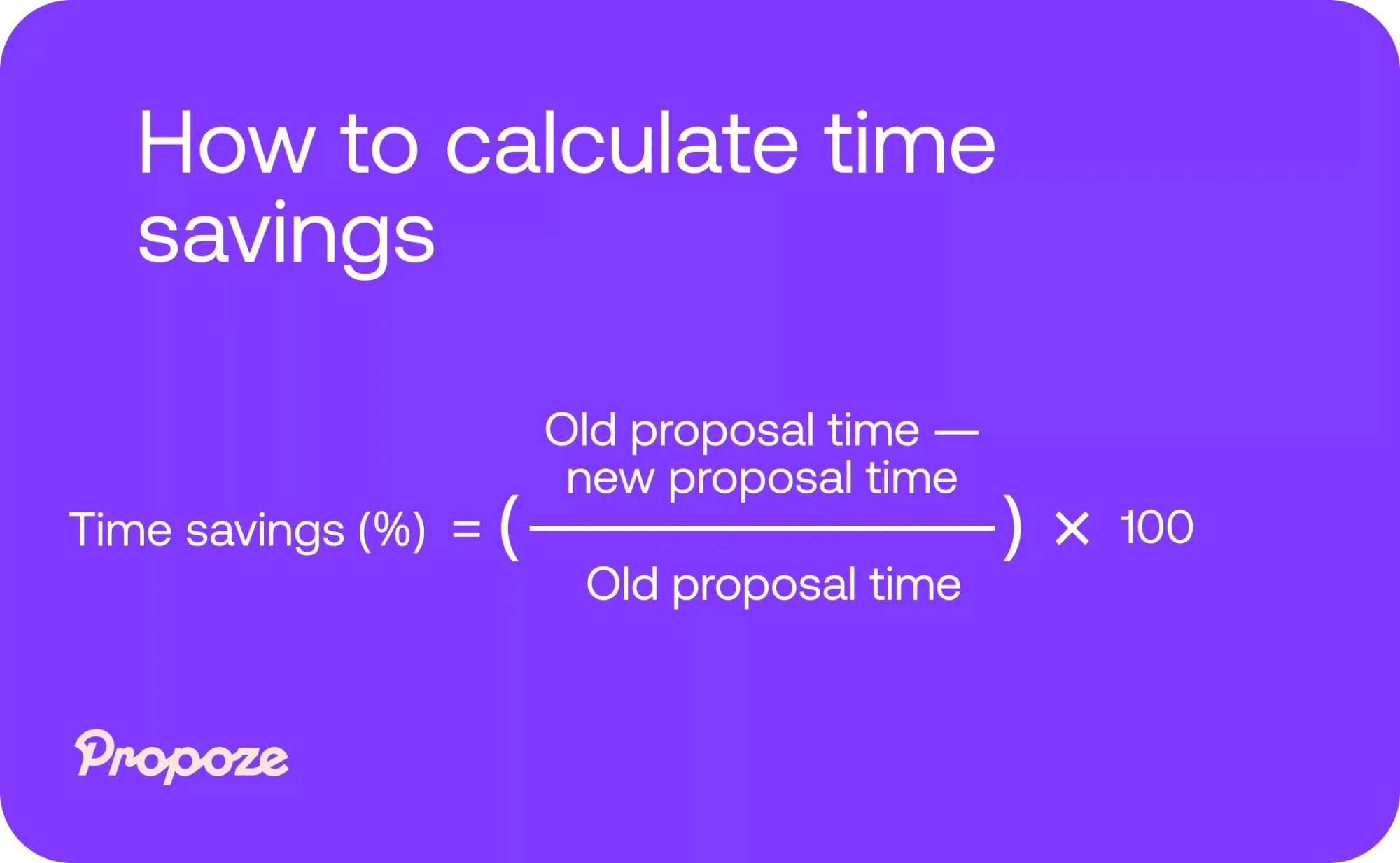
4) Client engagement
High client engagement often correlates with higher conversion rates. Understanding how clients interact with your proposals allows you to refine your content, making it more aligned with their interests and increasing the likelihood of a positive response.
How to calculate client engagement?
Use your proposal software’s analytics to track metrics like the time clients spend on each section, the number of views, and any actions taken (e.g., comments or signatures). These data points give you a clear picture of client interaction.
5) Error reduction
Fewer errors mean higher-quality proposals, which reflect positively on your business. Reducing mistakes also saves time, avoids potential delays, and enhances the professionalism of your proposals, making clients more likely to choose your services.
How to calculate error reduction?
Compare the number of errors or revisions needed in proposals before and after implementing automation. You can track this by counting the corrections made per proposal or the number of client feedback points requiring changes.

Ready to automate your sales proposals?
As we look to the future, automation is set to completely change how we create sales proposals.
It’s not just about getting things done faster — automation is making proposals smarter, more personalized, and more effective.
By embracing these tools, you can streamline your process, close deals more quickly, and stay ahead in a competitive market. The future of sales proposals is all about working smarter, not harder, and automation is the key to making that happen. Proposal professionals can leverage automation to enhance efficiency and effectiveness in the proposal creation process.